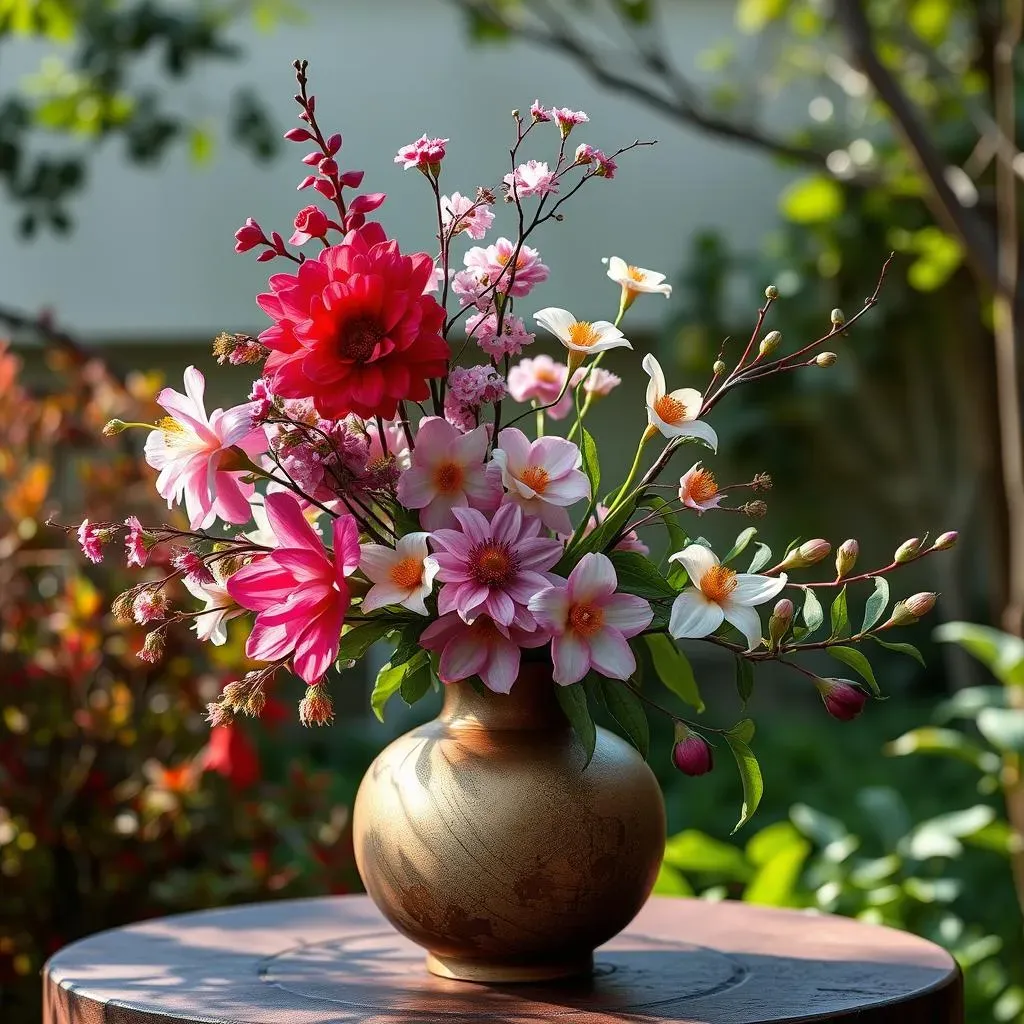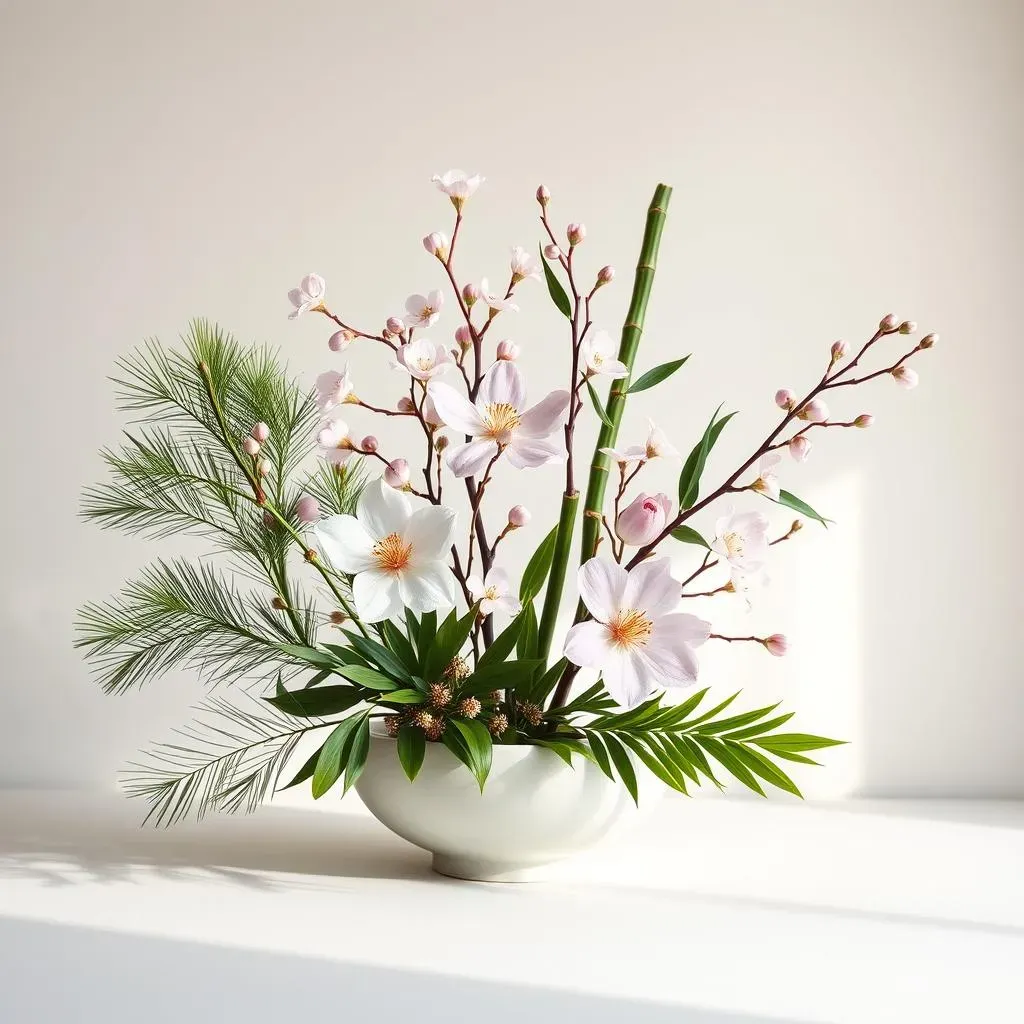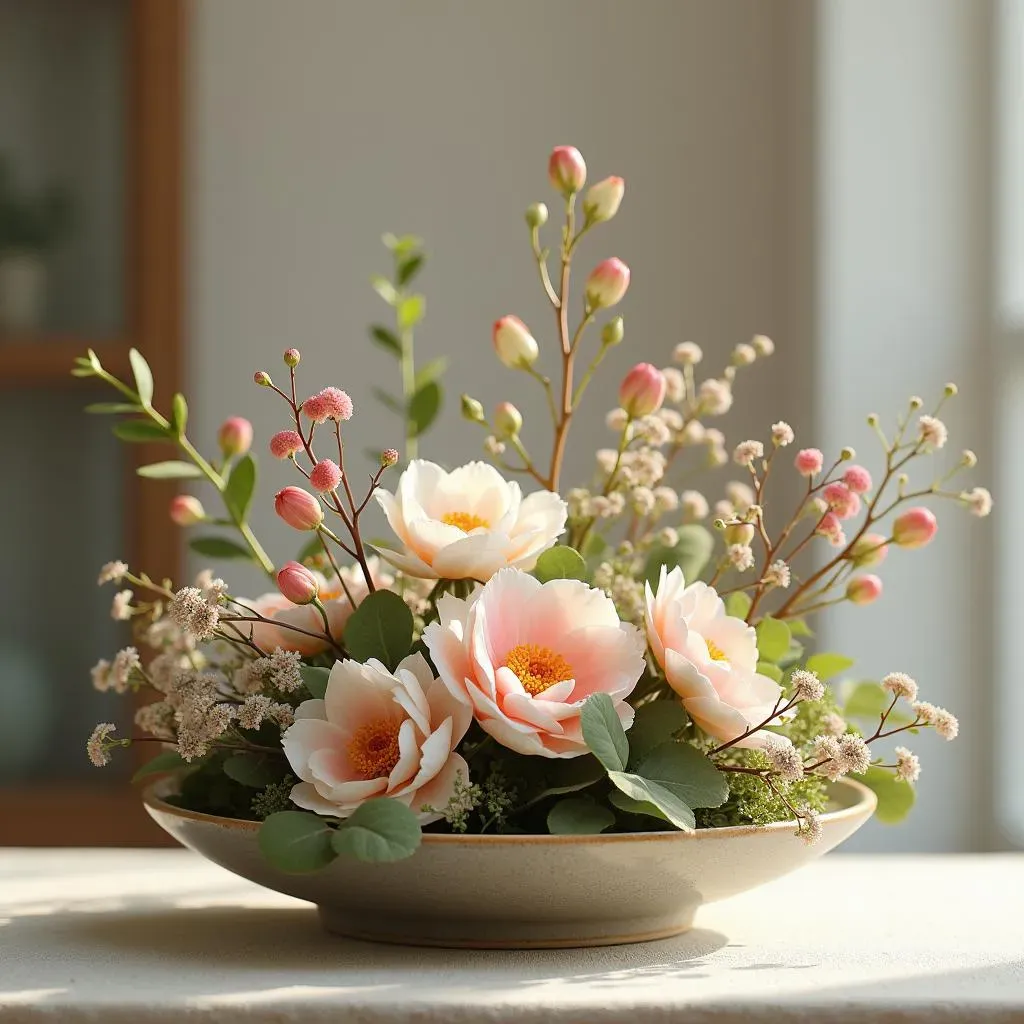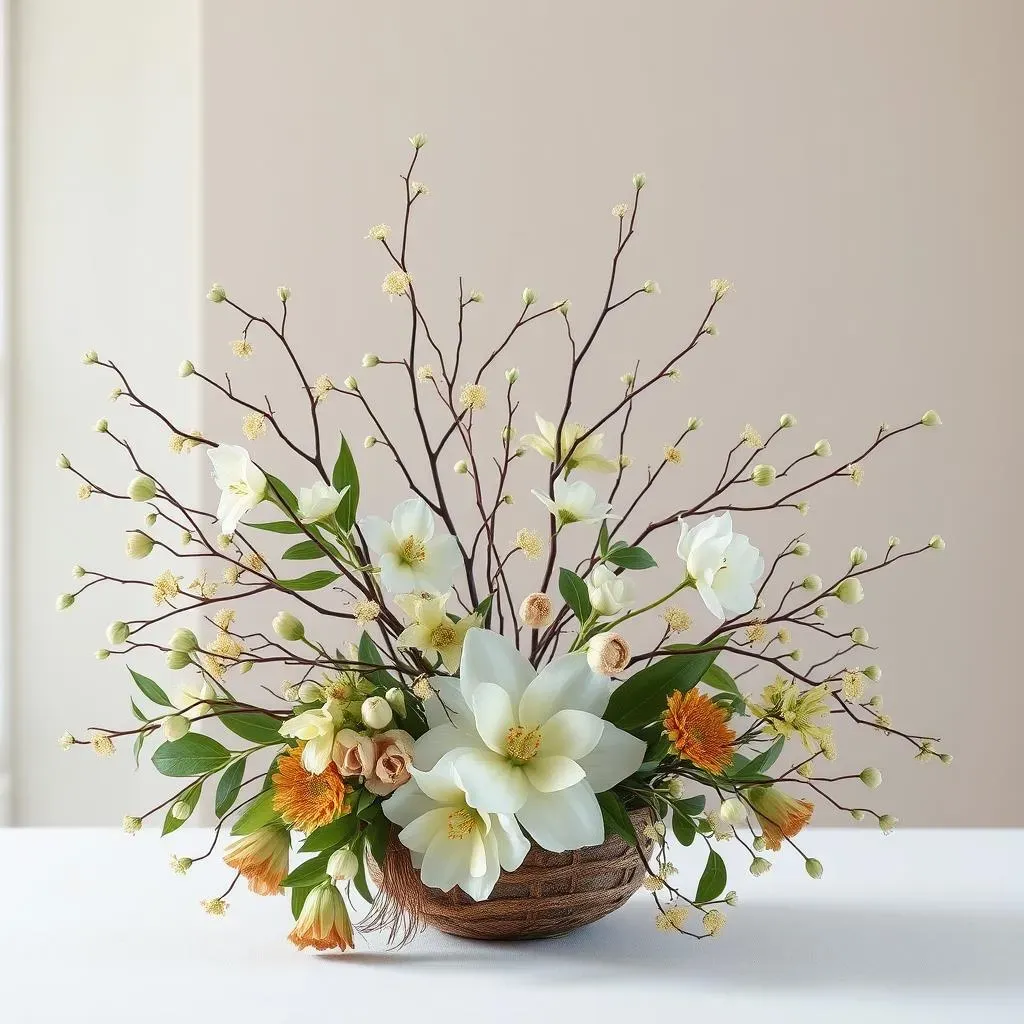Table of Contents
Ever wondered how those stunning, minimalist flower arrangements you see are made? That's Ikebana, the Japanese art of flower arranging, and it's way more than just sticking pretty blooms in a vase. It's a practice that honors nature, seasons, and the unique beauty of each plant. This isn't about creating a big, showy bouquet; it's about finding harmony and balance using natural elements. So, what flowers are used in Ikebana? It's not just about picking the prettiest ones; it's about understanding their symbolism, their seasonal relevance, and how they interact with each other. We'll explore how Ikebana uses a variety of plants, from delicate blossoms to sturdy branches, each with its own story to tell. Get ready to see flowers in a whole new light, and maybe even be inspired to try your hand at this ancient art.
The Seasonal Dance: What Flowers are Used in Ikebana
The Seasonal Dance: What Flowers are Used in Ikebana
Spring's Gentle Awakening
Think of spring, and you'll picture cherry blossoms, right? They're a big deal in Ikebana, symbolizing new beginnings. But it's not just about cherry blossoms. We're also talking about things like plum blossoms, with their delicate, early blooms, and the vibrant colors of peonies. These aren't just pretty faces; they represent the energy of the season bursting forth after a long winter. It’s like nature is saying, "Hey, look at me, I'm waking up!"
And it's not just about the flowers themselves either, it's about capturing the essence of spring. The way the branches curve, the way the light plays on the petals. That's what Ikebana is trying to express. It’s a bit like capturing a moment in time, before it all changes again.
Summer's Lush Abundance
Summer is a whole different ball game. We move away from the delicate blossoms and embrace the bold and the lush. Think irises, with their strong, upright forms, and lilies, with their showy, dramatic blooms. You’ll see things like sunflowers, too, standing tall and proud. It’s about capturing that feeling of abundance and growth, the sense that everything is reaching for the sun. Summer in Ikebana is all about boldness and confidence.
It’s not just about the flowers, either. You'll see lots of leafy greens and branches, reflecting the full, rich foliage of the season. It’s about capturing the feeling of a hot summer day, the buzz of insects, the sense of everything bursting with life. It’s a completely different energy than the quiet awakening of spring.
Season | Typical Flowers Used | Symbolism |
|---|---|---|
Spring | Cherry Blossoms, Plum Blossoms, Peonies | New Beginnings, Delicate Beauty |
Summer | Irises, Lilies, Sunflowers | Abundance, Boldness, Growth |
Autumn's Golden Hues
As the leaves start to turn, Ikebana reflects that change. We start to see things like chrysanthemums, with their rich, varied colors, and the deep reds and oranges of berries and branches. It's about capturing that feeling of transition, the sense that things are winding down, but with a beautiful, golden glow. The shapes and textures become more important, reflecting the changing landscape.
It’s not just about the colors, but also about the feeling of the season. The crisp air, the shorter days, the sense of things slowing down. Ikebana in autumn is often more subdued, more contemplative. It's a time for reflection, for appreciating the beauty of decay as well as growth.
More Than Just Pretty: The Symbolic Meaning of Ikebana Flowers
More Than Just Pretty: The Symbolic Meaning of Ikebana Flowers
so you've seen how Ikebana uses different flowers for different seasons, right? But it's not just about what looks good at the time. There's a whole language behind each choice. It's like the flowers are whispering secrets, and Ikebana helps us hear them. Each bloom carries a symbolic weight, adding a deeper layer to the arrangement. It's not just putting pretty things together; it's about conveying meaning and emotion.
For example, the pine, a classic in Ikebana, isn't just a random branch. It stands for longevity and steadfastness. The bamboo? It's all about flexibility and resilience. And those cherry blossoms we talked about? They represent the fleeting beauty of life. It’s a constant reminder that everything changes. It's like the flowers are telling a story, and we're just here to listen.
Flower/Plant | Symbolism |
|---|---|
Pine | Longevity, Steadfastness |
Bamboo | Flexibility, Resilience |
Cherry Blossom | Fleeting Beauty, New Beginnings |
Chrysanthemum | Nobility, Rebirth |
Iris | Courage, Nobility |
And it's not just about single flowers either. The way you combine them also carries meaning. For example, using a branch that's reaching upwards can represent growth and aspiration, while a branch that’s bending downwards might represent humility and reflection. The empty spaces are just as important as the flowers themselves. They represent silence and the potential for new things to emerge. It’s like a conversation between the flowers and the space around them.
So, next time you see an Ikebana arrangement, don't just look at the pretty colors. Think about the stories the flowers are telling, the emotions they're evoking. It's like a secret code, and once you start to understand it, you'll see Ikebana in a whole new light. It's more than just putting flowers in a vase; it's about a connection to nature and a deeper understanding of life itself.
Creating Harmony: Combining Different Flowers in Ikebana
Creating Harmony: Combining Different Flowers in Ikebana
The Art of Contrast
so you've got your flowers, you know what they mean, but how do you put them together? It's not about making everything matchy-matchy. It's about creating contrast. Think about it: a strong, upright branch paired with a delicate, drooping flower. The difference is what makes it interesting. It's like a good conversation where different viewpoints make the whole thing richer. Ikebana isn't about forcing everything to be the same; it's about embracing the differences to create something beautiful.
It's not just about the shapes, either. It's about the textures. The smooth petals of a lily next to the rough bark of a branch. The soft fluff of a pussy willow against the sharp edges of a leaf. These are the things that make an Ikebana arrangement come alive. It's like a tactile experience, even if you're just looking at it. The contrast creates a tension, a kind of visual energy that draws you in. It’s about finding the balance between different elements.
Finding Balance
Now, contrast is great, but you can't just throw random things together. You need to find balance. That's where the principles of Ikebana really come into play. It's about creating a sense of harmony, a feeling that everything is in its right place. It's like a well-composed piece of music, where different instruments come together to create something beautiful. You need to consider the size, shape, and color of each element, and how they relate to each other. It’s about creating a sense of equilibrium.
And it’s not just about the flowers and branches; it's about the container, too. The vase or vessel is just as important as the plants. It needs to complement the arrangement, not compete with it. It's like the frame around a painting, it enhances the artwork. The empty space around the arrangement is also vital. It's not just nothing, it's a part of the design. It allows the different elements to breathe and have their own space. It's like the silence between notes in a melody – it's what makes the music beautiful.
Principle | Description | Example |
|---|---|---|
Contrast | Pairing different shapes, textures, and colors | A tall, straight branch with a curved, delicate flower |
Balance | Creating equilibrium between elements | Arranging elements to create a sense of stability |
Harmony | Ensuring all elements work together | Choosing a container that complements the plants |
The Enduring Beauty of Ikebana
So, as we've seen, Ikebana isn't just about arranging flowers; it's about understanding and respecting nature's rhythm. The choice of what flowers are used in Ikebana is a thoughtful process, deeply connected to the seasons, symbolism, and the art of creating harmony through contrast. It teaches us to appreciate the simple elegance of individual plants and how they can come together to tell a story. Whether you're a seasoned floral artist or just someone who loves nature, Ikebana offers a unique way to connect with the natural world and find beauty in the subtle details. It's a gentle reminder that sometimes, less is truly more.
